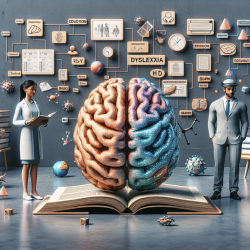Introduction
Schizophrenia is a complex mental disorder characterized by disruptions in thought processes, perceptions, emotional responsiveness, and social interactions. A recent study titled "Cognitive and psychopathology correlates of brain white/grey matter structure in severely psychotic schizophrenic inpatients" provides valuable insights into the brain structural correlates of cognitive and psychopathological symptoms in schizophrenia. This blog aims to help practitioners improve their skills by implementing the outcomes of this research or encouraging further exploration.
Key Findings from the Research
The study examined 28 inpatients with a DSM-5 diagnosis of schizophrenia, focusing on the active phase of the illness characterized by acute psychotic exacerbation. The research revealed several key findings:
- Grey Matter Volume Reduction: Increased psychotic severity was linked to reduced grey matter volumes in specific brain regions, including the medial portion of the right superior frontal cortex and the superior orbitofrontal cortex bilaterally.
- White Matter Volume Reduction: There was a notable reduction in white matter volume in the medial portion of the left superior frontal area.
- Memory Performance Correlations: Immediate verbal memory performance correlated with the volume of the left insula and inferior parietal cortex, while long-term visuo-spatial memory was associated with the grey matter volume of the right middle temporal cortex and cerebellar regions.
- Cognitive Inflexibility: Psychotic severity correlated with cognitive inflexibility, while negative symptom severity was related to disturbances in visuo-spatial processing and reasoning.
Implications for Practitioners
For practitioners, these findings highlight the importance of considering brain structural changes when addressing cognitive and psychopathological symptoms in schizophrenia. Here are some practical implications:
- Targeted Interventions: Understanding the specific brain regions affected by schizophrenia can guide the development of targeted interventions aimed at improving cognitive flexibility and memory functions.
- Early Detection and Monitoring: Monitoring changes in brain structure through imaging techniques can aid in early detection and help track the progression of the disorder, allowing for timely interventions.
- Personalized Treatment Plans: Recognizing the distinct neural correlates of different symptom dimensions can support the creation of personalized treatment plans that address the unique needs of each patient.
Encouraging Further Research
While this study provides significant insights, it also opens the door for further research. Practitioners are encouraged to explore the following areas:
- Longitudinal Studies: Conducting longitudinal studies can help clarify the causal relationships between brain structure, cognitive functioning, and acute symptoms in schizophrenia.
- Neurobiological Mechanisms: Investigating the underlying neurobiological mechanisms, such as dopaminergic and glutamatergic systems, can enhance our understanding of the disorder and inform treatment approaches.
- Integration of Cognitive Models: Integrating cognitive models with neuroimaging findings can provide a comprehensive understanding of how memory processes contribute to psychotic symptoms.
To read the original research paper, please follow this link: Cognitive and psychopathology correlates of brain white/grey matter structure in severely psychotic schizophrenic inpatients.










